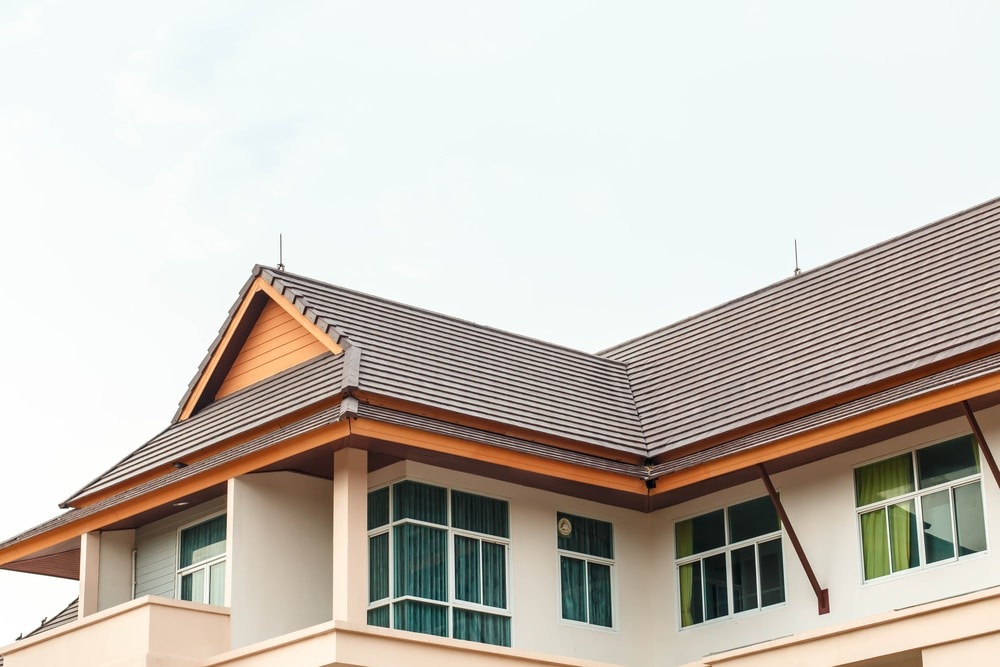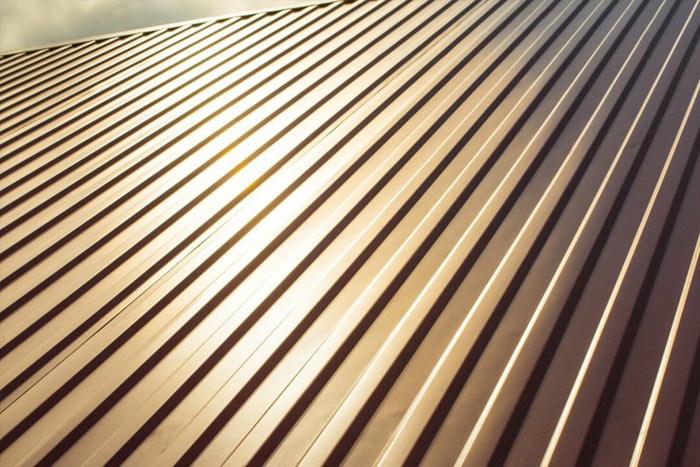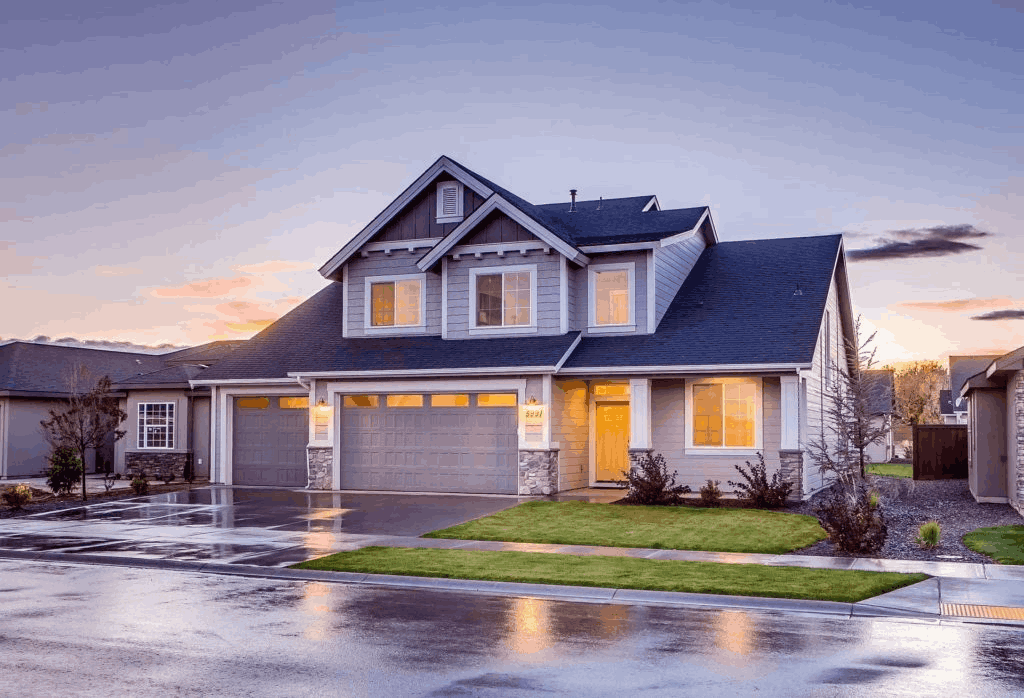It is well-known that having proper ventilation in a home or building has multiple benefits for health, comfort, and energy efficiency. Poorly ventilated indoor air can result in higher concentrations of pollutants, humidity problems, uncomfortable temperatures, and other issues that can lead to the deterioration of air quality. This article will focus on the impact of roof ventilation on Mesa indoor air quality.
In Mesa, Arizona solar radiation levels are much higher than in many parts of the country due to its dry climate and location near the desert. With an average daily temperature over 85°F (29°C) during summer months and low rainfall throughout most of the year, this city experiences extreme conditions which require special considerations when it comes to controlling moisture build up within structures. By understanding how roof ventilation works in this environment, homeowners can ensure their homes remain comfortable while keeping indoor air quality at acceptable levels.
Overview Of Roof Ventilation
Roof ventilation can be used to improve indoor air quality, as it helps remove pollutants from the environment while simultaneously allowing fresh air into a building. Roof ventilators provide support in improving both energy efficiency and comfort levels of a space by controlling the temperature inside. By strategically placing roof vents on different sides of the roof, one is able to create an effect known as cross-ventilation, which provides better air circulation throughout a building’s interior.
The installation process for roof ventilation systems depends on several factors such as type of structure (flat or pitched roofs), climate conditions, insulation needs and other environmental considerations. In order to ensure optimal performance, correct sizing and placement are important aspects that must be factored in when installing these types of systems.
Roof ventilation has become increasingly popular amongst residential buildings due to its ability to reduce humidity levels, decrease energy costs and increase thermal comfort within spaces. With careful consideration during design and implementation stages, individuals can expect improved indoor air quality alongside long-term cost savings through energy efficient measures taken with their property’s roofing system.
Benefits Of Roof Ventilation
Roof ventilation is an important factor in improving the indoor air quality of a home or commercial building. It provides numerous benefits, including improved energy efficiency and reduced moisture buildup from condensation. When installed properly, roof ventilation can help to regulate temperature, provide fresh air circulation, reduce odors, and improve overall comfort levels for occupants.
The addition of proper roof ventilation also helps to extend the life of shingles by reducing heat transfer from the attic space into the living area below. This reduces stress on the structure due to excessive temperatures caused by inadequate airflow and promotes better insulation performance. In turn, this may lead to long-term cost savings as it could result in lower heating costs during colder months and higher cooling costs when temperatures are warmer outside. Overall, adequate roof ventilation contributes significantly to healthier indoor air quality while helping reduce operating expenses associated with heated and cooled spaces.
Challenges Of Roof Ventilation
Roof ventilation has several benefits in improving indoor air quality, but there are also some challenges to consider. One of the primary issues with roof venting is cost. Installing a well-vented roof requires professional installation and significant materials costs, which can be expensive depending on the size and complexity of the project. Additionally, ongoing maintenance may be necessary to ensure that the system continues to function properly over time.
In addition to financial considerations, potential noise disruption from roof vents should not be overlooked. If improperly installed or maintained, roof fans can increase sound levels inside the home significantly due to their proximity to living spaces. This could lead to discomfort for occupants if they cannot find effective ways of dampening this additional noise. To avoid these problems, it is important for homeowners to carefully research what type of fan will best suit their needs and make sure that any installations are performed by qualified professionals who understand how these systems work.
Types Of Roof Ventilation Systems
The roof of a home is an important component when it comes to indoor air quality. Roof ventilation systems are increasingly being used as a way to improve air quality, reduce energy consumption and maintain comfortable temperatures in the house. This article will discuss some of the types of roof ventilation systems available for homeowners today.
Roof ventilation systems can be divided into two categories: natural ventilation and mechanical ventilation. Natural Ventilation involves using openings or vents on different parts of the roof that allow air flow from outside into the attic space, helping to keep it cool during hot summer months and warm during cooler winter months. Mechanical ventilation relies on fans to create forced airflow either out of or into the attic space, depending on what type of system is installed. These systems are usually powered by electricity and can be adjusted based on weather conditions. They may also have sensors built-in so they turn off automatically when not needed. Both natural and mechanical ventilation systems come with their own set of benefits and drawbacks which should be weighed before making a decision about which one would work best for your needs.
Factors Affecting Indoor Air Quality
The impact of roof ventilation on indoor air quality is a complex issue. Therefore, it is important to consider the different factors which can affect the quality of indoor air. This article will assess the five main factors that have an influence on air quality in mesa homes with roof ventilation systems.
- The type of building material used for construction and insulation greatly affects indoor air quality. The use of materials such as asbestos or lead-based paint can release harmful particles into the atmosphere when disturbed by activities like renovation work. Additionally, inadequate insulation or poor sealing between wall and floor joints may also cause moisture problems which can affect air quality over time.
- How often windows and doors are opened has an effect on air quality. Increased levels of fresh outside air coming into a home through open windows helps reduce concentrations of pollutants inside but this should be done carefully to avoid introducing too much humidity indoors. Furthermore, opening windows during periods of high pollution outdoors should be avoided as this could introduce dangerous particulate matter into the home environment instead.
- Household cleaning products contain many volatile organic compounds (VOCs) which are released into the air when used indoors and can contribute to poor indoor air quality if not properly ventilated elsewhere in the home once they are finished being used. Regular maintenance checks should therefore be carried out to ensure that fans and vents remain free from dust build up so they continue to function correctly and efficiently remove VOC emissions from indoor spaces.
- Smoking indoors increases exposure to hazardous chemicals present in cigarette smoke which causes health risks for everyone who breathes them in directly or indirectly via secondhand smoke inhalation. Smoking must always be conducted outdoors where possible and never near any openings leading into other rooms in order to prevent contaminated fumes entering living spaces through natural convection processes such as chimney effecting airflow patterns within homes.
- Cooking activities also have an impact on indoor air quality due to their potential production of carbon monoxide gas as well as grease vapours which accumulate over time if left uncleaned after food preparation finishes taking place each day. Suitable exhaust fans must then be installed above stoves or hobs so these unwanted substances are removed quickly before settling onto surfaces throughout kitchen areas increasing overall pollution levels significantly without proper measures taken beforehand against them doing so effectively enough regularly enough thereafter either manually or automatically depending upon individual preferences accordingly too accordingly now onwards towards better breathing environments going forwards positively hereoninfrom nowonwardsforthwith .

The Role Of Roof Ventilation In Improving Indoor Air Quality
The role of roof ventilation in improving indoor air quality is an important factor to consider when assessing the overall air quality inside a home. Ventilation can help reduce contaminants, allergens, and other particles that may be present in the air. Roof vents are designed to allow fresh outside air into the building while simultaneously exhausting stale interior air from the living space below it. This type of ventilation helps create positive pressure within the building, which has been shown to improve indoor air quality by reducing pollutants and increasing oxygen levels.
In addition to providing fresh outdoor air into a dwelling, proper rooftop ventilation also helps regulate temperature and humidity levels indoors. By controlling these two factors, homeowners can limit potential mold growth and discourage pest infestations due to dampness or extreme temperatures. Properly installed venting systems will also prevent water damage caused by ice dams during winter months as well as condensation build-up on windows, walls, and ceilings throughout all seasons. Overall, roof ventilation can have significant benefits for residential homes when it comes to maintaining good indoor air quality.
Best Practices For Installing And Maintaining Roof Ventilation Systems
The installation and maintenance of roof ventilation systems can play an important role in improving indoor air quality. Proper design, installation, and ongoing maintenance are essential for the success of such a system. In this section, best practices will be discussed to ensure that these systems work optimally.
When installing a roof ventilation system, it is important to carefully consider all factors including climate patterns, building structure, insulation levels, available materials, etc., as well as local regulations concerning fire safety or energy efficiency requirements. Furthermore, when selecting the components for the system itself – fans, vents, ducts – it should be ensured that they have sufficient capacity to meet your needs while also maintaining acceptable noise levels: too powerful a fan may create excessive noise pollution. It is also advisable to regularly inspect the parts of a roof ventilation system for wear and tear due to weathering effects over time; additionally one should check that any mechanical parts are functioning properly.
In order to maximize the effectiveness of a roof ventilation system it is thus necessary to pay close attention not only during its initial design but also its subsequent installation and maintenance. By following these best practices one can help guarantee improved mesa indoor air quality through effective roof ventilation implementation.


